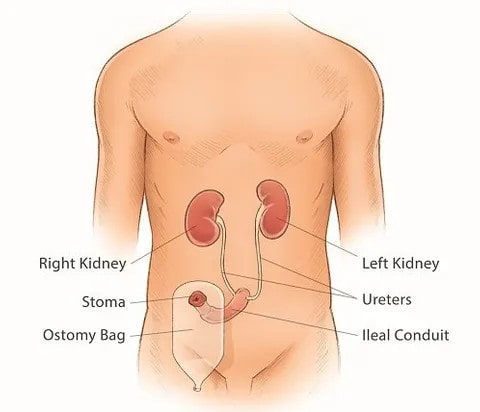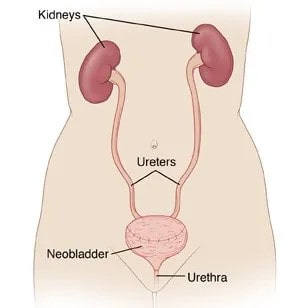Urinary Diversion
What is Urinary Diversion?
After bladder removal surgery (cystectomy) for bladder cancer or another condition, Dr Kim must create a new way for urine to exit your body (urinary diversion). Neobladder reconstruction, also called orthotopic neobladder reconstruction, is one option for urinary diversion. During the procedure, Dr Kim uses a piece of intestine to create a new bladder that allows you to urinate voluntarily and maintain continence.
The body regulate its internal chemistry by passing blood through the kidneys, which then filter the blood and passing the waste through the ureters into the bladder. This waste is then discharged from the body in the form of urine.
Because some types of cancer can only be remedied by removing the bladder, another way must be found in order for the body to discharge urine. These procedures are called urinary diversions.
The most common diversion is called an Ileal Conduit – this involves taking a piece of bowel and forming a ‘pipe’ that is inserted where the bladder once was. The conduit then carries the urine from the ureters out onto the skin of the abdomen where the conduit ends in a Stoma – a small opening. Urine is then emptied into a plastic bag attached to the skin, where it can be emptied at various intervals.
Alternatively, a reservoir for your urine can be formed to create a new bladder, “neobladder”. This would be undertaken to try to restore normal anatomy and avoid external bag. A section of bowel (around 50-60cm) is harvested and is connected to your urethra (waterpipe) to form this neobladder. This would require longer operation and recovery time. It can be associated with higher rate of complications and requires more patient involvement.
Other forms of diversion involve the formation of an internal pouch made out of part of the bowel. The pouch has an inbuilt valve so that urine collects inside and does not leak through the Stoma.
When it needs emptying, a small plastic tube called a Catheter can be passed through the stoma and the valve allowing urine to flow out. This is a major piece of surgery and requires much planning and recuperation time.
The best type of urinary diversion is to be individually tailored and should be thoroughly discussed with Dr Kim.

Ileal Conduit

Neobladder
